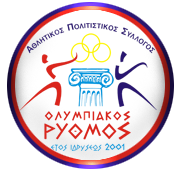Rhythmic Gymnastics, a combination of gymnastics and dance, is an exclusive sport. Result of search for natural and effortless movement, it was invented at the beginning of 20th century in Germany and in Sweden. Although the first organisation was held at 1948 in the USSR, this sport remained in the shadow of artistic gymnastics until 1956. Its artistic nature made it very popular in Eastern Europe and in 1962 was recognized as an independent sport from the International Federation of Gymnastics. The first World Championship was organised in 1963 in Budapest, but only just in 1972 the “code of grades of modern gymnastics” circulated from the International Federation. The name “Athletic Rhythmic Gymnastics” was given to it in 1975, but it has today it’s own old name: Rhythmic Gymnastics and is sport of Olympic Games since 1984.
The Rhythmic Gymnastics is executed with 5 instruments – little rope, ball, hoop, ribbons and clubs, but in the international organisations are being used only 4, which are selected per two years by the International Federation. In the individual competition, female athletes compete in order, in front of the judges, in team, five female athletes fight simultaneously, and the team that assembles, in total, the most grades is the winner. Only the 30 better female athletes participate in individual competition, and whoever takes the better grades, wins. The 8 first in each instrument qualify for the final. In team competition, each team competes with 5 similar instruments and afterwards with 2 different. Winner of the competition is the team with the better total grade, while final include the 8 better teams in each body. The competition lasts between 75 and 90 seconds and the athlete select the music of her preference. During the program the instruments should be in continuous movement and they should be used with both hands. Also, there should be included special movements for each instrument and the whole surface of platform to be used.
FIGURES
With all instruments, the choreography should include basic body movements
 |
 |
 |
 |
| Jump | Rotation | Rear Bending | Balance |
EQUIPMENT
The expressiveness is an elementary part of Rhythmic Gymnastics. In the scale of grades, all the equipments are equal: it depends from the athletes to exploit the possibilities that each one from them offers. Formerly, they were made from natural material (timber, tyre, rope), while today they are manufactured from synthetic matters mainly.
 |
|
 |
 |
| Ball | Hoop | Clubs | Ribbon |
 |
 |
| Shoes | Rope |
ATHLETE’S PORTRAIT
- At least 7 years of trainings are required in order for an athlete to reach the champion level.
- The female athlete is flexible, experienced in the ballet and in the modern dances, with balanced muscular system. The absolute muscle control is essential for the reduction of intensity, which prevents the radius and the comfort of movements.
- In each part of the sport (handling of bodies, harmonisation with music and bodily technical), separate training should be done, but also a heavy amount of time is essential for the acquisition of total expressiveness


